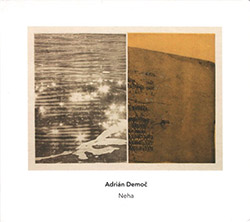
Neha, the Slovakian word for tenderness, is expressed by composer Adrián Demoč in this lovely and gentle work performed by the Slovak Radio Symphony Orchestra; and "Popínavá hudba", written for the international symphony orchestra for new music, Ostrava New Orchestra, referencing the growth of climbing plants through an alluring melodic line that shifts and spreads in direction.
In Stock
Quantity in Basket: None
Log In to use our Wish List
Shipping Weight: 3.00 units
Sample The Album:
Adrian Democ-composer
Slovak Radio Symphony Orchestra-orchestra
Marian Lejava-conductor
Ostrava New Orchestra-orchestra
Petr Kotik-conductor
Click an artist name above to see in-stock items for that artist.
Label: Another Timbre
Catalog ID: at208
Squidco Product Code: 33209
Format: CD
Condition: New
Released: 2023
Country: UK
Packaging: Cardboard Gatefold
Track 1 recorded in the Large Concert Studio of the Slovak Radio, Bratislava, Slovakia in June, 2021. Track 2 recorded at the Multifunctional Hall DOX+ in Prague, Czech Republic,in November, 2022.
Another Timbre Interview with Adrián Demoč
Neha, the Slovakian word for tenderness, is expressed by composer Adrián Demoč in this lovely and gentle work performed by the Slovak Radio Symphony Orchestra; and "Popínavá hudba", written for the international symphony orchestra for new music, Ostrava New Orchestra, referencing the growth of climbing plants through an alluring melodic line that shifts and spreads in direction.
Let's start with the first piece on the CD, "Neha". What does the title mean, and why?
"Neha" is the Slovak word for 'tenderness'. As both a listener and a composer I tend to prefer gentle and soft, non-violent music (I mentioned this in our first interview when the CD 'Ziadba' was released, and it's probably clear from my music). But I'm also always searching for different shades, possibilities and discoveries within this very broad category. So "Neha" is a piece in which there is no fighting or screaming. Rather, we listen to constantly returning chords, pitches, silence. I somehow felt that by gradually removing all the 'unnecessary' elements, I was composing naked music. Naked tenderness (in Slovak it almost sounds like word-play - "nahá neha"). And by the way, the name Neha also refers to a beautiful film by the Slovak director Martin Šulík.
Contemporary and experimental composers don't often get the chance to write for orchestras. How did "Neha" come about?
The piece was commissioned by the Czech Philharmonic as result of a competition for composers under 40. This was the second time that they had run this competition, and on this occasion it coincided with the first centenary of the creation of Czechoslovakia, so they decided to allow Slovak composers to participate as well. After many unsuccessful attempts in previous competitions, I sent the materials without any expectations, but, to my surprise, I was selected as one of the three finalists who were asked to write a new piece (the second part of the competition consisted in them judging the works before the actual performance and "Neha" got the third prize). I didn't want to write an exuberant fanfare-like celebration of the centenary, or to show off my "skills" in the competition. The piece I wrote is more likely to evoke a rather nostalgic feeling, although it is obviously not programmatic music.
I dedicated the piece to my 'Czech friends whom I love', as Slovak writer Dominik Tatarka would say. Without them, my music would have developed completely differently.
Was "Neha" the first orchestral piece you've written? And if so, were you at all worried about having your music played by orchestral musicians rather than musicians specialising in contemporary or experimental music?
"Neha" is my third piece for symphony orchestra. The first was a piece called simply 'Symphony' which I wrote as my Master degree final work in 2007/2008. The piece was then performed by Moravian Philharmonic Orchestra Olomouc in Brno, Czech Republic. Composition students there have this nice opportunity in that their final orchestral work is usually performed.
A couple of years later, in 2013, I wrote a piece called 'Selbstporträt mi Sikorski und Górecki (und Ligeti ist auch dabei)'. It was written at a time when I had just moved to Spain, and I was continuing to write music in spite of the fact that I didn't really have anyone to write for, as I didn't have any contacts there and had lost my physical contact with my fellow students and friends from Brno. So I wrote a piece for orchestra, quite utopian, with an individual scordatura for each string player, 1/6 clusters etc. The piece still hasn't been performed. And during all these years I've also been studying orchestration by myself. I have also written several pieces for string orchestra, so I've got some experience with writing for larger ensembles.
I wasn't really worried about having my music played by orchestral musicians. I did my best to make everything in the score and parts as clear as possible, and also did my best in trying to explain my vision to the conductor and players during the rehearsals. Obviously, there's much less time during rehearsals with an orchestra, so the ideas must be presented and verbalised in a clear and simple way.
In the case of "Neha" I wrote down these ideas for the conductor and the musicians just before the concert, and asked the players to pay attention to the following issues (I'm quoting from the score now):
The composition uses relatively simple harmonies, and the entire musical plot takes place at quiet dynamic levels, even at moments when the orchestra is playing tutti. Therefore, each note and chord must be played with enormous tenderness - quietly, softly, delicately. It is extremely important to maintain the necessary calmness and concentration throughout the duration of the whole piece.
Relatively consonant 'known' chords are used, but the whole thing happens beneath this surface. For example, these 'well-tempered' (and 'well-known') chords are doubled, or played in unison with, the same chords but using natural harmonics outside of the tempered tuning system. This doubling creates a gentle trembling of interferences, which adds a special acoustic quality, and, subjectively speaking, some kind of nostalgic 'tenderness'. This 'trembling of interferences' should be audible from the very beginning of the piece.
By the way, I wasn't able to be present at either the rehearsals or the concert for the second performance of "Neha" by the Slovak Radio Philharmonic Orchestra, but I think Marián Lejava, the conductor, did a great job. We chose that performance for the CD.
And what about "Popínavá hudba"? What does that mean?
Any translation is rather problematic: 'hudba' means 'music', but 'popínavá' is a Slovak word referring specifically to the growth of climbing plants, for which there is no English equivalent. 'Climbing music' might be alright, except that the piece has nothing whatsoever to do with mountaineering, nor with going up trees, ladders or stairs.
How did the piece come about?
It was written for the Ostrava New Orchestra, an international symphony orchestra for new music created by the 'Ostrava Center for New Music' for the 'Ostrava Days' festival and other projects run by them. I was a participant at the Ostrava Days institute for composers in 2015 and 2017, and it seems that my music was noticed by the organisers who asked me to write this piece for a concert called 'Essential Youth', consisting of 5 premieres by young(er) composers (between ages of 24 and 41). So I'm very thankful to the Ostrava Center for the opportunity and trust they've placed in me.
I find it a really seductive bit of music, but how does it work?
The compositional method was rather simple: listening, again and again, immersion, attention. With humility and open ears. Getting rid of the unnecessary and doing my best to understand what this emerging music is about.
The piece works with a single melodic line (but I wouldn't dare say the piece is about the melodic line). This line goes back and forth, often taking irregular shapes and curves. To me it resembles a climbing plant, hence the title. Technically speaking, the 'skeleton' of this melodic line is constructed upon a basis of a duo of double bass and cello (playing only natural harmonics), but this detail isn't of a big importance for the listener.
There are a couple of other things here, too: a cluster, a simple but ever-changing shading of the melodic line, and a few sounds I´ve never used before, some of which appeared to me while dreaming.
Inevitably early commissions tend to be for small ensembles, and I know that some contemporary composers struggle when asked to write for orchestra. You seem to handle the transition very well, but do you enjoy writing orchestral music, or do you prefer the intimacy of chamber music?
Yes, I do enjoy it, although it's obviously a lot of extra work, too (especially with the parts and notation and design of the whole score), and the possibilities of future performances of any orchestral piece are usually quite limited. But I find it intriguing to, for example, search for the intimacy you mention within an orchestra and thus convert it as an interesting paradox, a compositional task - how to achieve intimacy with, let's say, orchestral tutti? Then there are other things, for example the possibility of creating situations you can only create when you have a certain number of people, or different timbres etc. Or even a supposedly simple question of balance or orchestral heaviness/lightness. So there's a possibility of many threshold situations which I find very inspiring.
So I can't really say which I prefer (although I'm tempted to say that a chamber situation would win). Looking back, I think both experiences are deeply connected. In other words, my way of composing actually does stay the same. And perhaps the two mutually enrich each other. That's why, for me, "Neha" is very connected with pieces such as 'Modré kvety' or 'A Luca Marenzio' (focused more on verticality, chords), while "Popínavá hudba" shares more similarities with newer pieces focused on (imperfect) unison, such as 'Hudba (Za názvom)' or 'Sen'. All this wasn't calculated beforehand, but arose directly from the writing process.
And there are also details and (for me) huge discoveries from my chamber pieces which I used in the orchestral sound as well, for example practice mutes for brass or oboes ('A Luca Marenzio', 'Modré kvety'), natural harmonics, etc. On the other hand, "Neha" was my first piece that's longer than 20 minutes, and this experience helped me to go further with my chamber music and write pieces such as the hour-long violin solo 'Dotyky. Za zrkadlom'.
But I feel I've been very lucky in these last years, having the possibility to work with orchestral, solo musicians and chamber ensembles, including instruments from folk music or the world of early music. So I feel really happy to be able to keep composing, be it solo, chamber or orchestral music.
Artist Biographies
• Show Bio for Adrian Democ "Adrian Demoč is a composer and occasional performer and improviser (fujara, piano). He studied with Martin Smolka, Frantisek Emmert, Doina Rotaru and Osvaldas Balakauskas in Brno, Bucharest and Vilnius. In 2008, Adrian received the Leoš Janáček foundation prize and later continued his doctorate studies with Martin Smolka (his thesis "Spectral music and its perception of time" was published in 2012), obtaining a PhD. In 2010 he was the head of the jury of the music discipline at NEU/NOW Nantes festival organized by ELIA European League of Institutes of the Arts. In 2011 he was the selected composer for the United Nations Youth Orchestra (Benasque, Spain) with his piece Three movements for string orchestra (2011). Adrian's music has been performed so far in Slovakia, Czech Republic, Germany, Austria, Romania, Lithuania, France, Spain and USA. His music ranges from orchestral (Symphony, Zikkurat) and chamber music to conceptual scores (Chess) and multi-media performances (Bioprodukt)." ^ Hide Bio for Adrian Democ • Show Bio for Petr Kotik "Petr Kotik (surname originally Kotík) (born January 27, 1942, in Prague) is a composer, conductor and flutist living in New York City. He was educated in Europe (Prague Conservatory, graduated 1961; Vienna Music Academy, graduated 1966; AMU Prague, graduated 1969). From 1960 to 1963, Kotik studied composition privately with Jan Rychlík in Prague, and from 1963 to 1966 at the Music Academy in Vienna with Karl Schieske, Hans Jelinek, and Friedrich Cerha. In Prague, he founded and directed Musica Viva Pragensis (1961–64) and the QUAX Ensemble (1966–69). He came to the United States in 1969 at the invitation of Lukas Foss and Lejaren Hiller to join the Center for Creative and Performing Arts at the University at Buffalo. Since 1983, Kotik has been living in New York City. Kotik is the founder and Artistic Director of the S.E.M. Ensemble, based in New York City, which presents both chamber and orchestra concerts. Kotik has received numerous commissions and composition grants, from the National Endowment for the Arts. Kotik received a 1996 Foundation for Contemporary Arts Grants to Artists Award. He is also known for his realization of the complete musical works of Marcel Duchamp. With the S.E.M. Ensemble (which he founded in 1970), Kotik has for many years actively promoted the work of other (mostly American) composers sharing a stylistic affinity with his own work, giving frequent performances as conductor and performer with the group as well as its larger version, the Orchestra of the S.E.M. Ensemble. Kotik's music is composed in the minimal vein, with works often being of long duration and featuring slow tempi and quiet dynamics. Though his works feature innumerable gradual, slight changes, giving them a seemingly static quality, his harmonies, however, are more complex than those employed by many other American minimal composers, and his musical process is not as apparent to the listener as, for example, in the works of Steve Reich or Philip Glass. Further, Kotik does not draw as heavily on jazz or rock in his works as do many of his American colleagues (though, like Steve Reich, he is quite interested in Medieval music and often integrates Medieval compositional techniques into his works). These qualities set Kotik's music apart from American minimal trends, giving his music a decidedly European character more similar in outlook to, for example, that of Hungarian minimalists such as Zoltán Jeney, László Sáry, or László Vidovszky. Among Kotik's best known works is the six-hour opera Many Many Women (1976–78), based on a text by Gertrude Stein, for whose work, appropriately, Kotik has a special affinity. As a performer, Kotik has been an active chamber musician throughout much of his life. Until 1992, Kotik did not have the slightest interest in orchestra. That changed in 1992, when he conducted Atlas Eclipticalis by John Cage with the 86-piece Orchestra of the S.E.M. Ensemble in Tribute to John Cage at Carnegie Hall, with David Tudor as the soloist. Since then, Kotik has been organizing large-scale events, expanding the S.E.M. Ensemble into The Orchestra of the S.E.M. Ensemble, and encouraging and commissioning other composers to write for orchestra. In 1999, after conducting Gruppen by Karlheinz Stockhausen, Kotik initiated a project of compositions for 3 orchestras and commissioned the creation of new 3-orchestra works by Alvin Lucier, Christian Wolff, Martin Smolka, Phill Niblock and Olga Neuwirth. In 2001, Kotik founded the biennial Ostrava Days, an Institute and Festival of New Music in Ostrava, Czech Republic. This three-week program, one of the largest in existence, focuses on works for orchestra, with 2 resident orchestras and number of resident composers, chamber music groups and soloists. Although Kotik entered the conservatory at the age of 14, he only began composing in his late teens. This was due to his lack of interest in classical harmony, a tendency shared with other composers such as Christian Wolff and John Cage. As a composer, Kotik is essentially self-taught, in spite of his education in Western composition fundamentals in Prague and Vienna. His technique has very little to do with commonly used compositional methods. Kotik's compositional system can be compared to a game in which the use of controlled chance is balanced by conscious decision-making. The two alternate, one influencing the other. In this way Kotik triggers unpredictable processes while the work progresses in the envisioned direction. In recent years, Kotik has relied increasingly on intuitive gestures. The strategies and limitations Kotik imposes on chance, along with intuitive decisions, are at the root of his compositional process. Among Kotik's best-known compositions are Music for 3 (1964) for piano and 2 strings; Spontano (1964) for piano and ensemble (composed for Frederic Rzewski); Kontrabandt (1967), a live electronic work commissioned by the WDR Electronic Music Studio; Many Many Women (1975–78) on a text by Gertrude Stein; and Letters to Olga (1988–91) on a text by Václav Havel. His orchestra pieces include: Quiescent Form (1994–96); the one-hour-long Music in Two Movements (1998–2002); Variations for 3 Orchestras (2002–2005); and Spheres and Attraction (2005–2006) for 2 voices, string quartet and percussion on a text by R. Buckminster Fuller. "Kotik’s massive and too modestly named Fragment (1st movement of Music in Two Movements), which he conducted with his SEM Orchestra gives me sufficient pretext to voice the overdue sentiment that he is one of the best composers working today...among those writing abstract works for ensembles of unconventional instruments, Kotik stands very near the top and possibly at the top. He produced some of the most durable, though still little-known musical monuments of the post-Cage 70s, and his output has been amazingly consistent in quality.” (New York music critic and composer Kyle Gann, The Village Voice 1998). Kotik's music is available on the Labor, Dog w/a Bone and Ear-Rational labels. His father was the painter Jan Kotík. He is married to the curator and art historian Charlotta Kotik, great-granddaughter of Tomá Garrigue Masaryk, and has a son, Tomas (Tom), who is a New York-based sculptor. His other son, Jan Jakub Kotik, was born in 1972 and died of cancer in 2007." ^ Hide Bio for Petr Kotik
11/20/2024
Have a better biography or biography source? Please Contact Us so that we can update this biography.
11/20/2024
Have a better biography or biography source? Please Contact Us so that we can update this biography.
Track Listing:
1. Neha 28:37
2. Popinava Hudba 26:23
Compositional Forms
European Improvisation, Composition and Experimental Forms
Large Ensembles
Ambient & Minimal Music
New in Compositional Music
Search for other titles on the label:
Another Timbre.


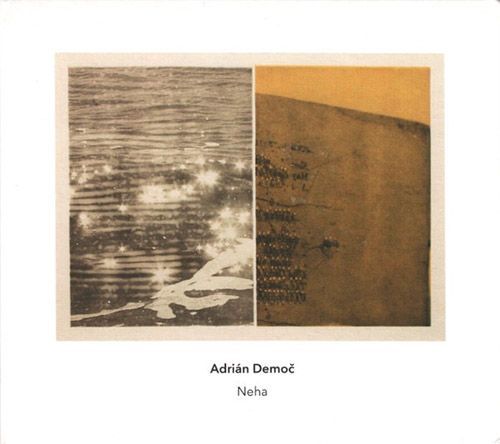


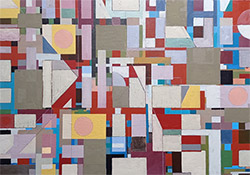


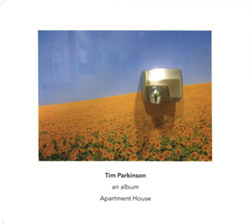



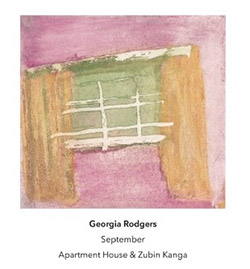
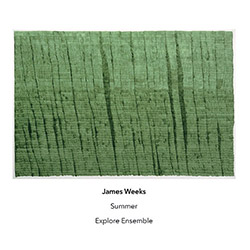
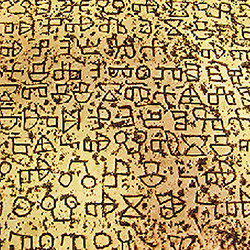
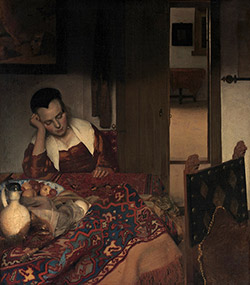
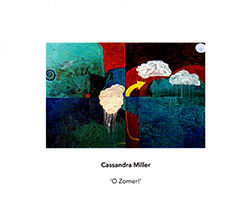
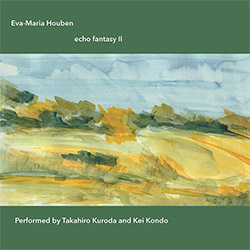






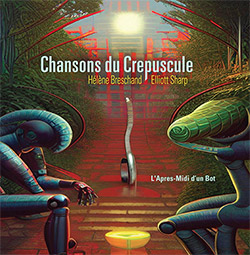
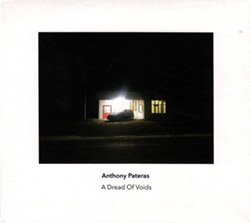
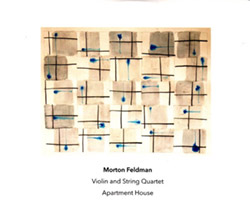
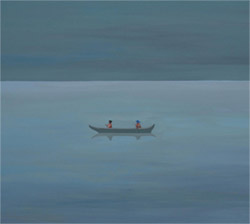



![Guy, Barry / Ken Vandermark: Occasional Poems [2 CDs]](https://www.teuthida.com/productImages/misc4/34849.jpg)
![Novoa / Carter / Mela Trio: Vol.1 [VINYL]](https://www.teuthida.com/productImages/misc4/35236.jpg)


![Elephant9 : Mythical River [VINYL]](https://www.teuthida.com/productImages/misc4/34624.jpg)
![Evans, Peter (Evans / Eldh / Black): Extra [VINYL]](https://www.teuthida.com/productImages/misc4/35279.jpg)

![McPhee, Joe: Straight Up, Without Wings [BOOK]](https://www.teuthida.com/productImages/misc4/35454.jpg)
![Jeck, Philip: rpm [2 CDs]](https://www.teuthida.com/productImages/misc4/35455.jpg)













![Barker / Parker / Irabagon: Bakunawa [VINYL]](https://www.teuthida.com/productImages/misc4/35533.jpg)
![Blaser, Samuel / Marc Ducret / Peter Bruun: Dark Was The Night, Cold Was The Ground [VINYL 10-inch]](https://www.teuthida.com/productImages/misc4/35492.jpg)








![Warren, Kenny (Warren / Hoffman / Ellman): Sweet World [VINYL]](https://www.teuthida.com/productImages/misc4/35451.jpg)




![Blake, Ran / Dave Knife Fabris: Live Amsterdam 2006, First Visit [CD + POSTCARDS]](https://www.teuthida.com/productImages/misc4/35275.jpg)













![DNS: Taking Big Bites Of The Khandas Three Cafes Deep [2 CDs]](https://www.teuthida.com/productImages/misc4/35334.jpg)




![Cleaver, Gerald: The Process [VINYL]](https://www.teuthida.com/productImages/misc4/34966.jpg)




![Alva Noto: HYbr:ID II [VINYL 2 LPs]](https://www.teuthida.com/productImages/misc4/35201.jpg)

![Baron, Derek / Luke Martin: Distinct and Concealed [CASSETTE + DOWNLOAD]](https://www.teuthida.com/productImages/misc4/35079.jpg)

![Lyle, Erica Dawn : Colonial Motels [CASSETTE + DOWNLOAD]](https://www.teuthida.com/productImages/misc4/35080.jpg)









![Sanna, Claudio: Compositori Sardi Contemporanei II [2 CDs]](https://www.teuthida.com/productImages/misc4/35317.jpg)







![Zurria, Manuel: Fame di Vento [3 CDs]](https://www.teuthida.com/productImages/misc4/35167.jpg)

![Granberg, Magnus / Nattens Inbrott / Skogen: Holde Traume, Kehret Wieder! [2 CDs]](https://www.teuthida.com/productImages/misc4/35038.jpg)
![Frey, Jurg: Outermost Melodie [2 CDs]](https://www.teuthida.com/productImages/misc4/35039.jpg)

![Pavone, Jessica: Reverse Bloom [VINYL]](https://www.teuthida.com/productImages/misc4/34895.jpg)



![Modney (Modney / Wooley / Gentile / Roberts / Pluta / Symthe / ...): Ascending Primes [2 CDs]](https://www.teuthida.com/productImages/misc4/34852.jpg)









![Elephant9 with Terje Rypdal: Catching Fire [VINYL 2 LPs]](https://www.teuthida.com/productImages/misc4/35355.jpg)
![Deerlady (Obomsawin, Mali / Magdalena Abrego): Greatest Hits [VINYL]](https://www.teuthida.com/productImages/misc4/34876.jpg)




![Haino, Keiji: Black Blues [2 CDs]](https://www.teuthida.com/productImages/misc4/35109.jpg)



![Surplus 1980: Illusion of Consistency [CD]](https://www.teuthida.com/productImages/misc4/35069.jpg)
![Staiano, Moe: Away Towards the Light [VINYL + DOWNLOAD]](https://www.teuthida.com/productImages/misc4/35037.jpg)



![Caveira (Gomes / Sousa / Abras / Ferrandini): Ficar Vivo [VINYL]](https://www.teuthida.com/productImages/misc4/34643.jpg)
![Gregg, J. J. / David Van Auken: Lunar Prairie [CD w/ DOWNLOAD]](https://www.teuthida.com/productImages/misc4/34611.jpg)

![Coultrain: Mundus [VINYL]](https://www.teuthida.com/productImages/misc4/32439.jpg)
![Mattin: Songbook #6 [VINYL]](https://www.teuthida.com/productImages/misc4/27317.jpg)
![Punkappella: Wake Up [7-inch VINYL]](https://www.teuthida.com/productImages/misc4/17519.jpg)
![Residents, The: WARNING: UNiNC.: Live And Experimental Recordings 1971-1972 [VINYL 2 LPs]](https://www.teuthida.com/productImages/misc4/31521.jpg)
![Coultrain: Phantasmagoria [VINYL]](https://www.teuthida.com/productImages/misc4/30142.jpg)
![Lennon, Sean Ono: Asterisms [VINYL]](https://www.teuthida.com/productImages/misc4/34517.jpg)

![Coley, Byron: Dating Tips for Touring Bands [VINYL]](https://www.teuthida.com/productImages/misc4/17906.jpg)

![Lost Kisses: My Life is Sad & Funny [DVD]](https://www.teuthida.com/productImages/misc4/lostKissesDVD.jpg)